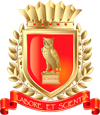Culture is a set of values, the way of creating and using them. Values arise from people’s understanding the significance of some material or spiritual object. This object has a value if one sees it as a means of satisfying his/her want. Thus value is not a thing, but a special kind of meaning which a person puts into it. So value orientation is primarily a preference or rejection of certain meanings as an existential organizing principle and (un)willingness to act in accordance with it [1, с. 139а]. All types of values represent a hierarchically ordered system, in the center of which there are the higher values that define the essence of the other values and concentrate them into a unity [2, с. 134]. One of the higher values is a reliable family. Traditional family values are a set of assumptions about the family that affects the choice of family goals, ways of organizing life and interaction. Let us specify what most of us had in mind speaking about family values. Most likely, it is the principles of relationships both between spouses and between parents and children, which include: love, care, understanding, patience, loyalty, sacrifice, respect, compassion, mutual support, honesty, sincerity, and trust. These principles are the fundamental basis of any problem-free family. But we should ignore the local culture. For example, in Middle Ages a lady-love was estimated more than a wife. A real knight was happy to die for her (a lady-love) waving a handkerchief to him, and he was not obliged to love the wife. In the 70-s in the Slavic culture the most common type of family became a child-centered one where the child was one of the highest values for both parents. Then a child was more important for many mothers than his father: «My child is my own flesh and blood, and I can do without a husband.» In Arab culture, no lover can be more precious than the mother: «Each person can have only one mother but many wives.» A modern family is very different from its prototype as a lot has changed – from requirements to the partner and allocation of duties in the marriage to relationships with children and common family values. But whatever culture surrounded a person, each has his/her own hierarchy of values in life, and each family occupies its own place in this hierarchy.
Библиографическая ссылка
Бочарова Е.В. традиционные ценности культуры: Брачно-семейная сфера // Успехи современного естествознания. 2013. № 8. С. 90-91;URL: https://natural-sciences.ru/ru/article/view?id=32714 (дата обращения: 02.01.2026).



